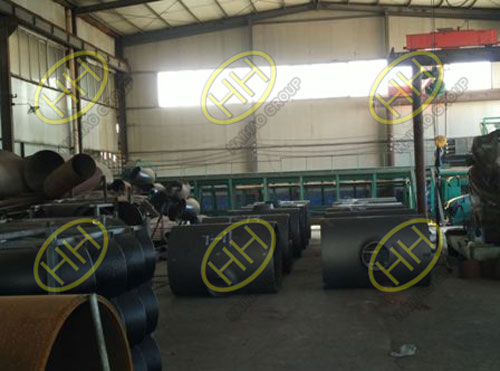What is the Radiographic Testing?
Radiographic Testing (RT) is a non-destructive testing (NDT) method which uses either x-rays or gamma rays to examine the internal structure of manufactured components identifying any flaws or defects.
In Radiography Testing the test-part is placed between the radiation source and film (or detector). The material density and thickness differences of the test-part will attenuate (i.e. reduce) the penetrating radiation through interaction processes involving scattering and/or absorption. The differences in absorption are then recorded on film(s) or through an electronic means. In industrial radiography there are several imaging methods available, techniques to display the final image, i.e. Film Radiography, Real Time Radiography (RTR), Computed Tomography (CT), Digital Radiography (DR), and Computed Radiography (CR).

Carbon steel A234 barred tees after radiographic testing
There are two different radioactive sources available for industrial use; X-ray and Gamma-ray. These radiation sources use higher energy level, i.e. shorter wavelength, versions of the electromagnetic waves. Because of the radioactivity involved in radiography testing, it is of paramount importance to ensure that the Local Rules is strictly adhered during operation.
Computed Tomography (CT) is one of the lab based advanced NDT methods that TWI offers to industry. CT is a radiographic based technique that provides both cross-sectional and 3D volume images of the object under inspection. These images allow the internal structure of the test object to be inspected without the inherent superimposition associated with 2D radiography. This feature allows detailed analysis of the internal structure of a wide range of components.
If you want to know more technical information, please feel free to contact us.Email:sales@haihaogroup.com
